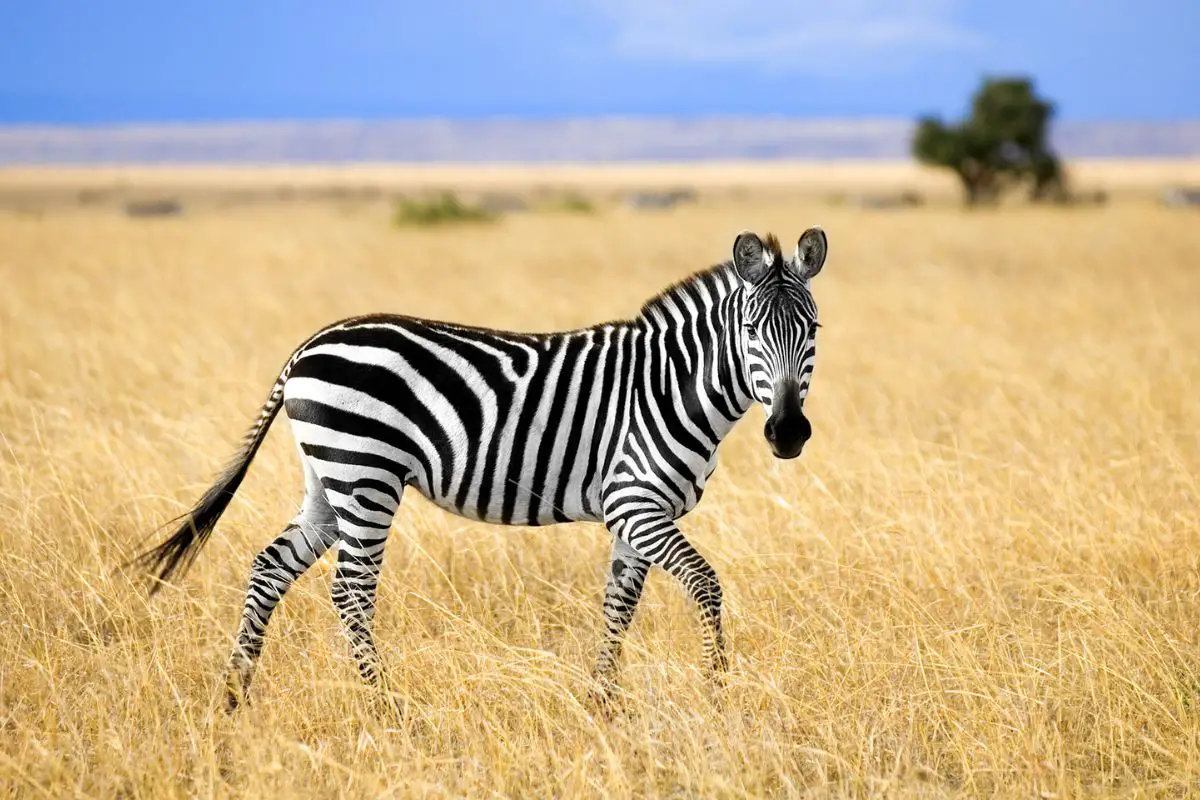
Zebras are some of the most easily noticeable animals in the world. They are mammals belonging to the Equidae family and the Equus genus. Zebras have black fur, white stripes, and mostly white bellies.
In addition, they have large hairy round ears, capped single-hoofed feet, and long hairy tails with stripes at the top. There are three living species of zebras in the world, including Grevy’s zebra (Equus Grevyi), plain zebra (Equus Quagga), and mountain zebras (Equus zebra). The mountain zebra is the tallest and heaviest, with 770-990 pounds and 5 feet shoulder height.
Mountain zebras come second with 450-948 pounds weight and 3.81-4.79 feet shoulder height, while plains zebras come third with 386-770 pounds and 3.61-4.76 feet shoulder height. Zebras live in treeless grasslands and savanna woodlands. They are herbivorous, feeding mainly on grass and the stems and bushes of herbs.
In addition, they have a long lifespan and can live for 20 years in the wild and up to 40 years in a zoo. Zebras live in family groups of 5-20, consisting of one male (stallion), several females(mares), and young ones. The stallion leads the harem and alerts the females and youngsters to run from danger.
Zebras are brave with high speed (56km/hr) and exceptional hearing and eyesight. When predators attack, zebras defend themselves by biting and kicking with their powerful kicks. They also congregate in groups and form a circle to surround a predator.
Several animals are similar to zebras. This article discusses some of the animals similar to these magnificent creatures.
1. Horses
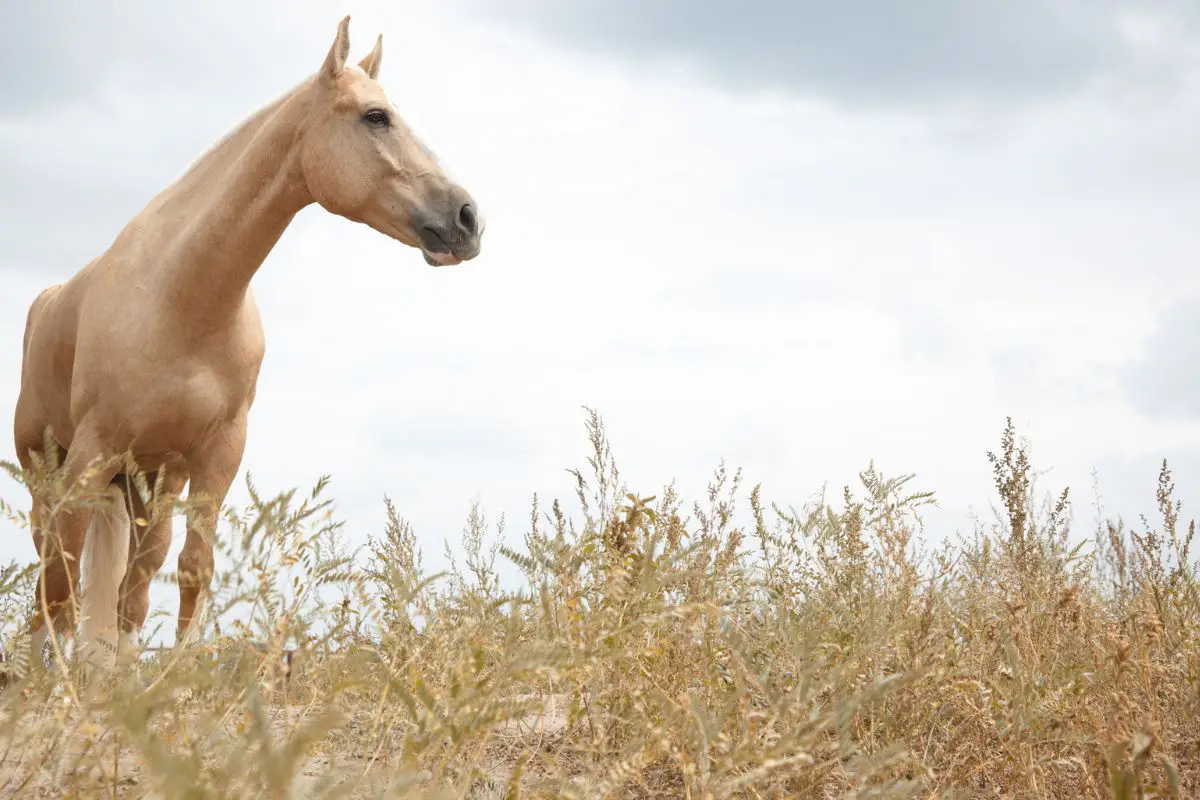
Horses are mammals belonging to the Equidae family, Equus genus (Equus Caballus). They are plain colored with single-toed long feet, short hair, short ears, and long hairy tails. Horses are adaptive to various habitats, but they prefer cool temperate grasslands.
They are herbivorous and eat grass and edible shrubs. In addition, they prefer living near freshwater sources. An average horse can weigh 900-2200 pounds, with an average height of 15.2 (5.1) feet depending on the breed.
Wild horses can live for 15-20 years, while domestic ones can live for 25-30 years. Horses are social and cannot live alone by choice. They prefer living in herds and have mutual grooming behaviors.
Zebras and donkeys are similar to horses because they are mammals belonging to the same family and genus. In addition, they are both social and have high-speed, strong vision and smell. Besides, they live in family groups and prefer similar habitats.
Horses are heavier and taller than zebras. In addition, they have short ears and are plain colored, unlike zebras, which have long ears and distinctive white stripes. Besides, horses can be domesticated while zebras cannot.
2. Okapis
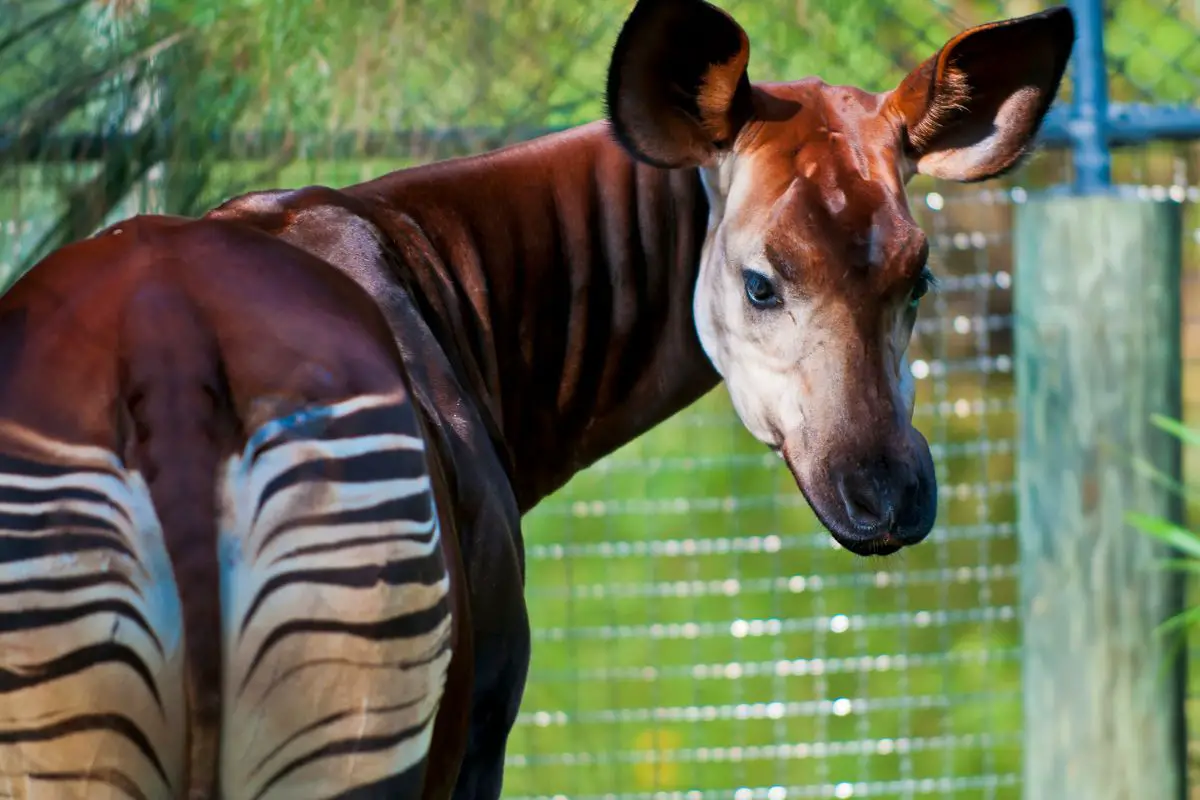
Also known as forest giraffes, Okapis are long-necked mammals belonging to the Girrafidae family. They are the closest relatives to the giraffe and have long upright ears and distinctive white stripes on the hind quarters and the front legs. Okapis are native to the Ituri rain forest in the Democratic Republic of Congo.
They prefer living in the flora of rainforests and feeding on leaves, fruits, and buds. Okapis are active day and night but spend 30-50% of the day resting. An average Okapi weighs 440-660 pounds and stands about five feet.
Although Okapis are naturally calm, they can exhibit aggressive behavior, including kicking and slapping when competing for a female. In addition, they mark their territories by crossing their legs in dance-like movements or urinating. Okapis are similar to zebras due to their distinctive striped hind and front legs and their herbivorous nature.
In addition, they are both native to Africa and mammals. Okapis differ from Zebras because they are shorter and weigh less. Unlike zebras, the white stripes in Okapis only appear on the hindquarters and front legs.
Besides, Okapis have longer necks due to their close relationship with giraffes.
3. Donkeys
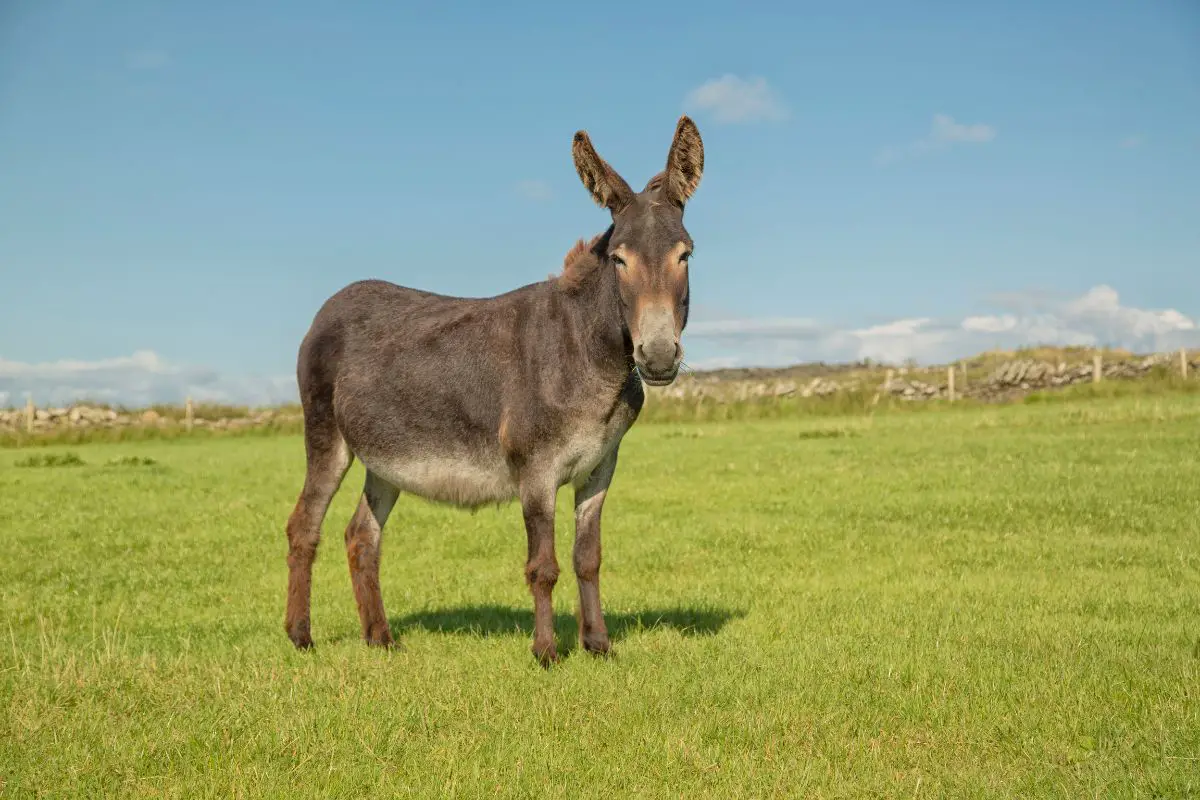
Like zebras, donkeys are mammals belonging to the Equidae family and Equus genus. They have long ears and are gray or black colored with a dark mark that runs from the mane to the tail. A male donkey is called a jack, while a female donkey is called a Jennet.
There are three types of donkeys which include wild, feral, and domesticated. An average donkey stands about 3.3 feet tall and weighs around 551 pounds, depending on the breed. Wild donkeys inhabit desert regions with warmer temperatures and dry climates.
On the other hand, domesticated donkeys can live in varied inhabitants, although they thrive in dry, warm areas. Humans use domestic donkeys on farms to pull carts and guard other animals. Donkeys are herbivorous, feeding on grass, shrubs, leaves, bark, and stems.
Wild donkeys live in herds where a jack is a leader. They are mostly active in the mornings and evenings and rest during the day’s hottest hours. In addition, they can live 27-40 years.
Donkeys are similar to Zebras because they belong to the Equidae family and have short ears and hairy necks. In addition, they are both herbivorous mammals. However, they are slightly different because, unlike zebras, they can be domesticated.
Donkeys inhabit desert areas with higher temperatures, while zebras inhabit open grasslands and savanna woodlands. They are shorter and lighter than zebras.
4. Baird’s Tapir

Bairds Tapir is also the central American Tapir and is a long-nosed mammal native to Mexico. It has a tube-like nose that resembles and functions like an elephant trunk. In addition, its front feet have four toes, while the hind feet have three.
An average Tapir weighs 330-660 pounds, stands 5-8 feet tall, and can live up to 30 years. Tapirs inhabit tropical rainforests and grasslands. They feed on herbs, fruits, stems, and leaves.
In addition, they are excellent climbers and swimmers. A Tapir hides in water when it senses danger. Although Tapirs are naturally shy and quiet, some live in social units.
They resemble zebras because they are both herbivorous odd-toed mammals belonging to the perissodactyl group. Tapirs are different from zebras because they have long tubed noses and are good swimmers.
5. Black Rhinoceros
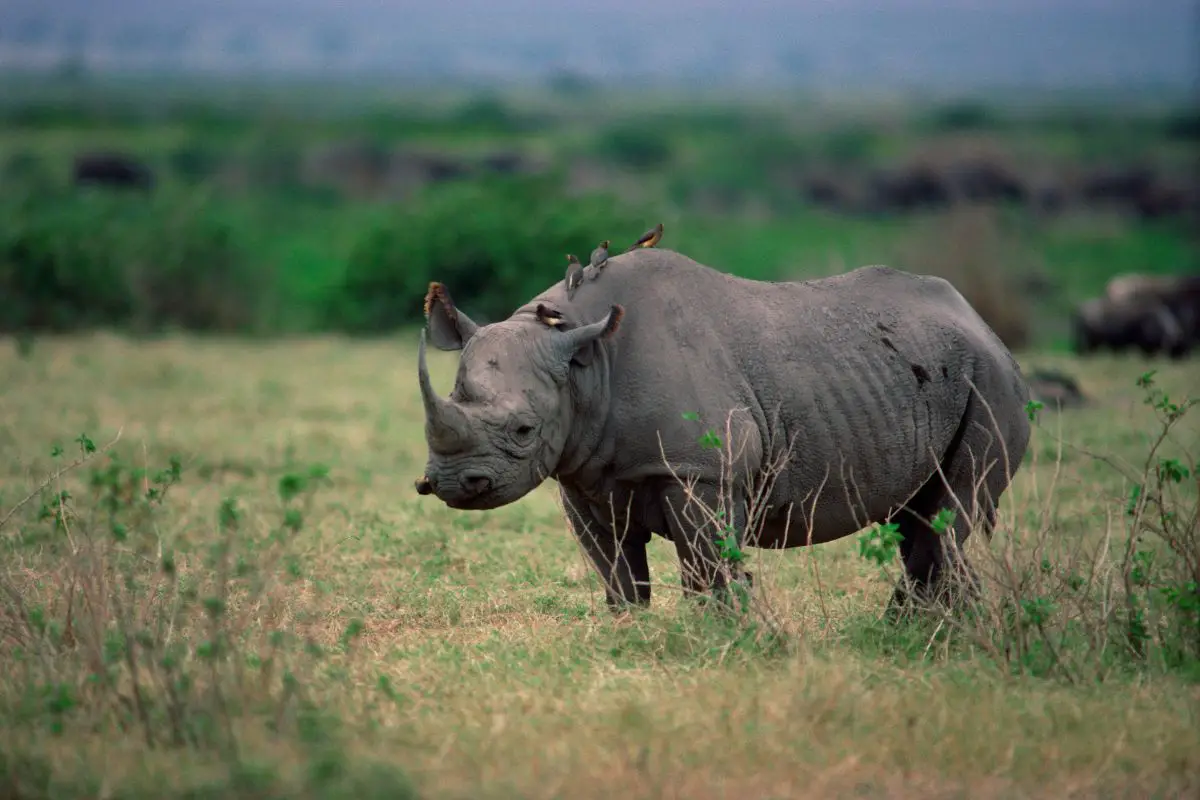
Also abbreviated as black rhino, the black rhinoceros is a large mammal and the second largest animal in the world after an elephant. It has a massive body, a big head, a short tail, and short legs. In addition, it has a distinctive long horn in the middle of the face.
Black rhinos are found in South Africa, Kenya, Namibia, and Zimbabwe. They inhabit tropical and subtropical grasslands, savanna , scrublands, and deserts. In addition, they feed on leaves, stems, and bushes.
Black rhinos are solitary animals. They mostly feed at night, like rolling in water holes to coat their skins with natural sunscreen and bug repellant. An average black rhino weighs 1900-3000 pounds and stands 5.2 feet high.
In addition, it can live for 30-45 years. Like zebras, black rhinos are odd-toed herbivorous mammals belonging to the perissodactyl group. However, they differ because they are taller and heavier without distinctive patterns.
Besides, black rhinos have a horn in the nose that is absent in zebras.
6. Hinny
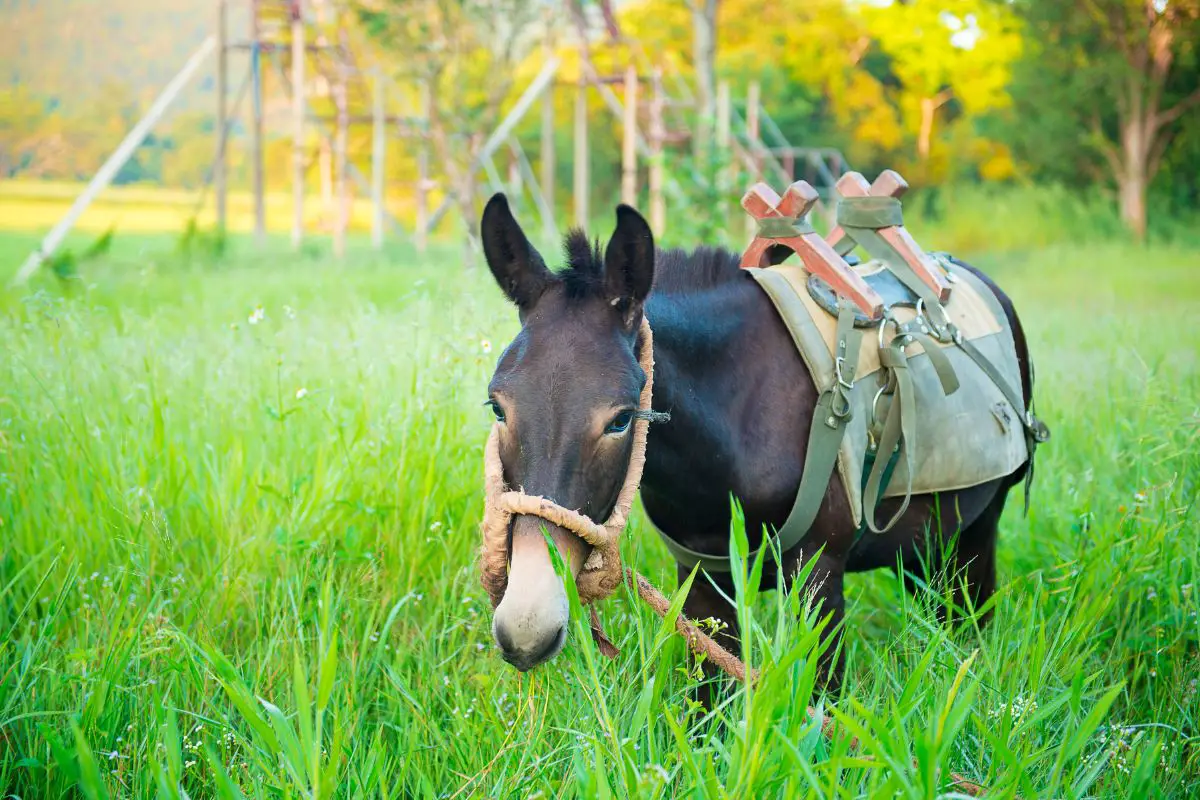
A hinny is a domestic hybrid of a female donkey and a male horse. Hinnies are popular as ranching and farm animals in Portugal, Brazil, and Columbia. In addition, they bear the traits of a donkey and horse.
Thus, they are calm, strong, intelligent, resilient, patient, and fast. An average hinny weighs 300-800 pounds and stands 24-50 inches tall. Hinnies are herbivorous and feed on grass, herbs, stems, and leaves.
Although they are domestic, hinnies can withstand warm areas and tough environments. Besides, they have a lifespan of 30-40 years. Hinnies are similar to zebras because they are hybrids of horses and donkeys that belong to the Equidae family.
In addition, they are herbivorous mammals. Zebras are wild and unpredictable, unlike hinnies, which are domestic.
7. Zorse
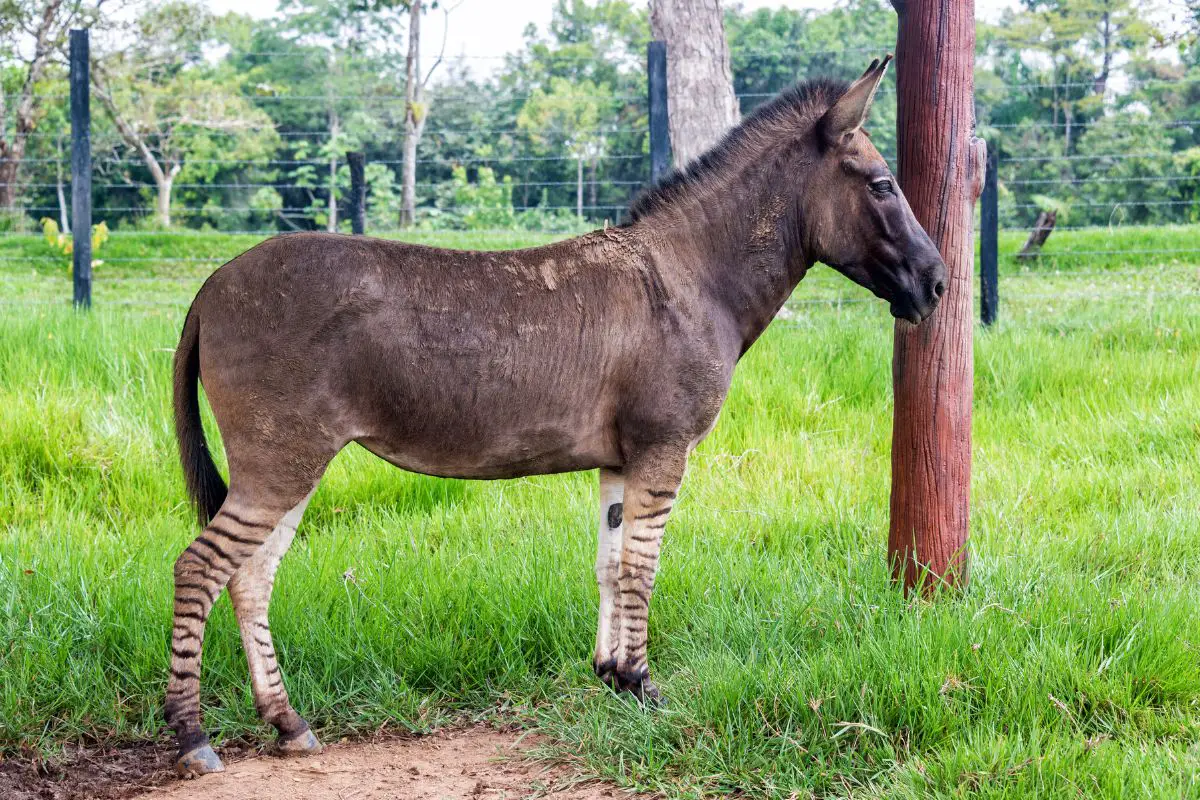
A Zorse is a product of crossbreeding a horse and a zebra. It has a striking resemblance to a horse with stripes like a zebra. Thus, it’s aggressive, tall, has a long thick neck, short hair, and a long tail.
Zorses are hardly found in the wild because they have to be cross-bred by humans. Therefore, you can only find them in zoos and private homes. An average zorse weighs 500-990 pounds and stands 4.5-5.3 inches tall.
Zorses are herbivorous and feed on grass, stems, leaves, and twigs. They are similar to zebras because both are mammals and have camouflaging stripes and long tails. Unlike zebras, zorses come in different colors, including white,tan, black,red, and tan.
In addition, they are sterile, unlike zebras that produce offspring.
8. Przewalski’s Horse
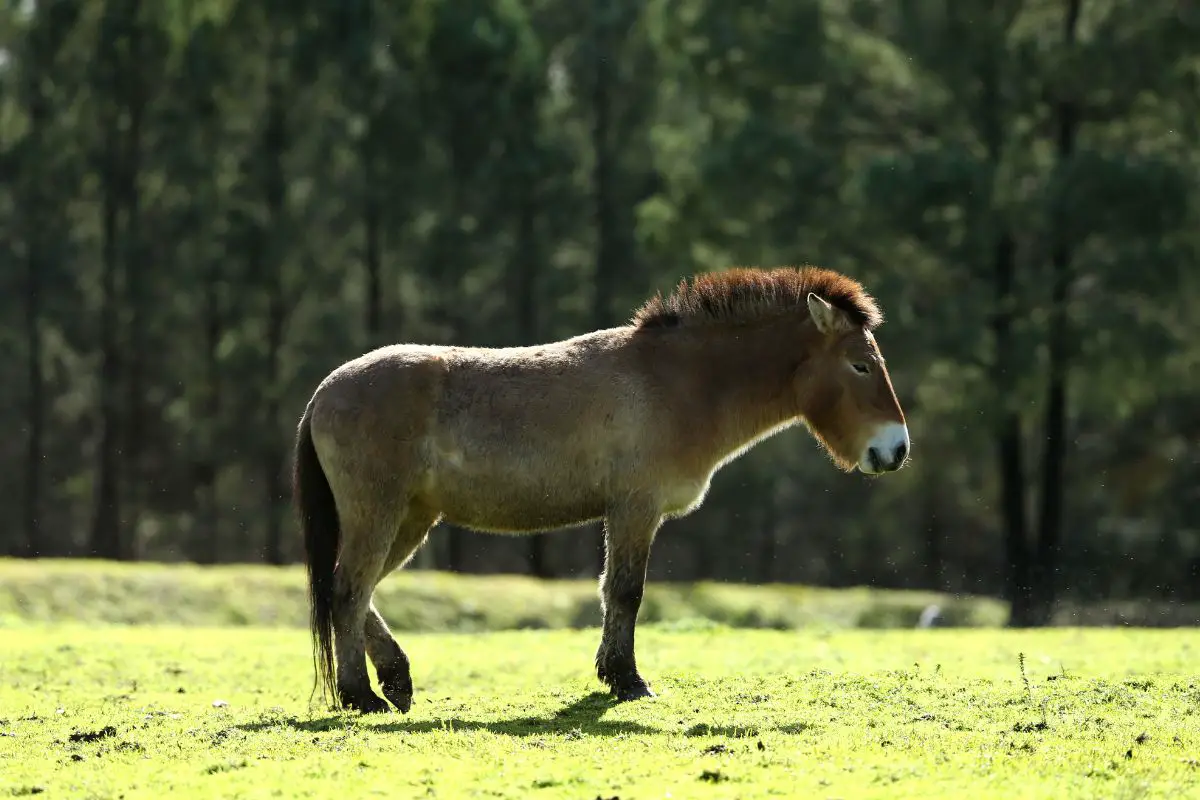
Also known as the Mongolian wild horse, Przewalski’s horse is a rare breed belonging to the Equus ferus genus. It was last seen in Mongolia in the 1960s before it got extinct. However, it was reintroduced in the 1990s and is currently found in Khutsan Nuruu national park and Tahkin Tai national reserve.
The horse inhabits steppes and semi-desert areas and feeds mainly on grass and herbs. An average Mongolian wild horse weighs about 500-600 pounds and stands about 4.7 feet high. Przewalski’s horses are friendly and live in herds of 10-20, consisting of one dominant male, several females, and offsprings.
The herd feed and grooms together with the male leading the herd. These horses have a lifespan of up to 20 years. Przewalski’s horses belong to the same family as zebras.
They are both herbivorous mammals and live in family groups. The two animals have different habitats, with zebras inhabiting savanna grasslands and Mongolian wild horses inhabiting semi-desert areas.
9. Turkmenian Kulan
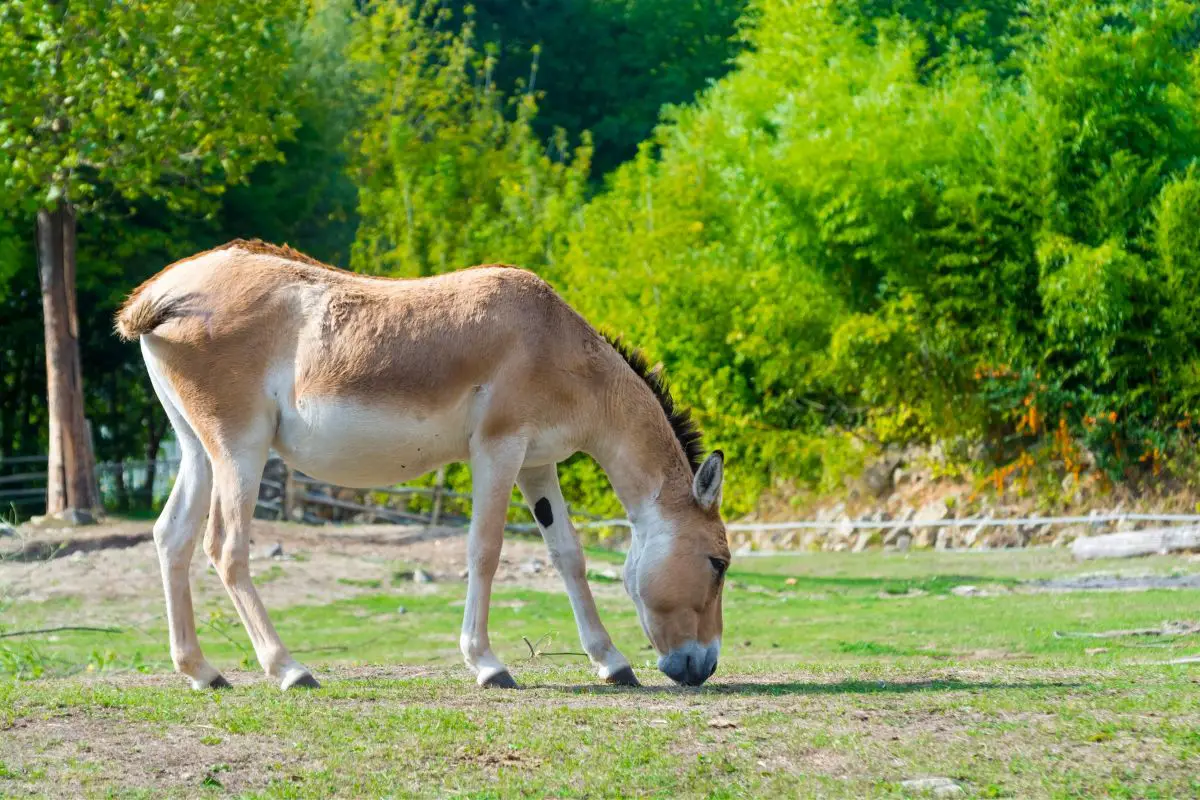
Turkmenian Kulan is also the Asian wild ass or Equus Hemionus Kulan. It’s native to Mongolia in South East Asia and weighs 440-600 pounds, standing 3.5 to 4.5 feet, with a lifespan of 15-40 years. Turkmenistan Kulans are two-toned with a light tan on the back, hind, and around the eyes.
They have white bellies, necks, and feet. Kulans inhabit savannas, shrublands, and grasslands. They live in herds, are fast runners, and feed on grass, herbs, and twigs.
You can find Kulans in Kazakhstan, Ukraine, and Uzbekistan. Zebras and Kulans belong to the Equidae family. They are herbivorous and inhabit savanna grasslands.
In addition, both are fast runners and social. The two animals differ in size and weight. Kulans are shorter and lighter than zebras.
Besides, Zebras have striking stripes that Kulans lack.
10. Malayan Tapir
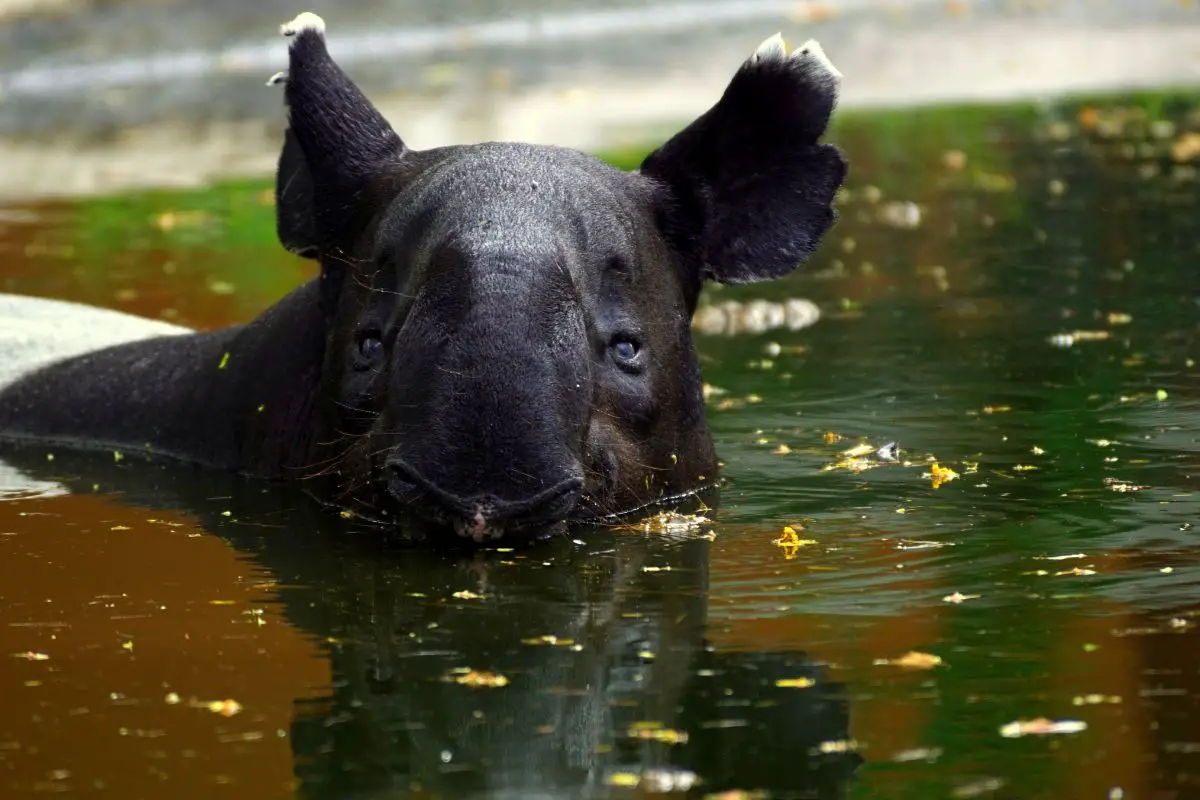
The Malayan Tapir is the largest of the Tapir species. It resembles a giant pig with a long tube-like nose, a striking black front body, a white midsection, and black behind. In addition, it inhabits wetlands, tropical rain forests, and swamps.
Malayan Tapirs are mainly found in Thailand, Malaysia, and Indonesia. They weigh up to 700 pounds and stand 3.2 feet high. In addition, they are solitary, super fast, and great swimmers.
These animals feed on grass, fruits, stems, and leaves. Although zebras and Malayan Tapis do not have any striking resemblance, they belong to the perissodactyl order and have odd toes. In addition, they are both fast and herbivorous mammals.
However, their habitats are different. Zebras prefer savanna grasslands, while Malayan Tapirs prefer wetlands, swamps, and thick forests.
11. Poitou Donkey
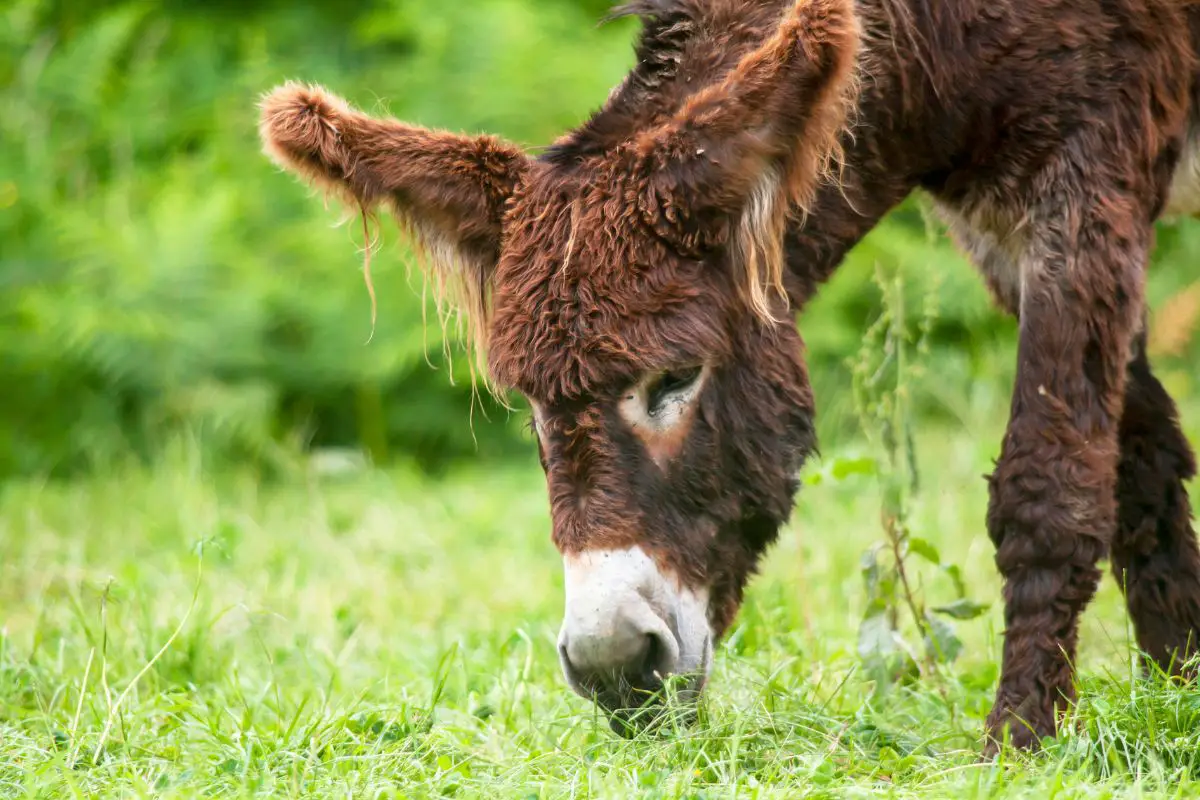
The Poitou donkey originates from the Poitou region of France. It has a loosely hanging coat and long thin legs that distinguish it from the rest. The Frech people bred the Poitou donkey mostly for mule production.
An average Poitou weighs up to 250 pounds and stands about five feet tall. It feeds mainly on grass, herbs, stems, and fruits. In addition, it has a long neck, ears, and back and inhabits the Greenland savanna.
The poitou belongs to the same family and has a striking resemblance in their physical appearances. However, unlike Zebras, Poitou donkeys have a loose furly coat. Although both are herbivorous mammals, zebras have distinctive white stripes that set them apart from the Poitou donkey.
12. Kiang
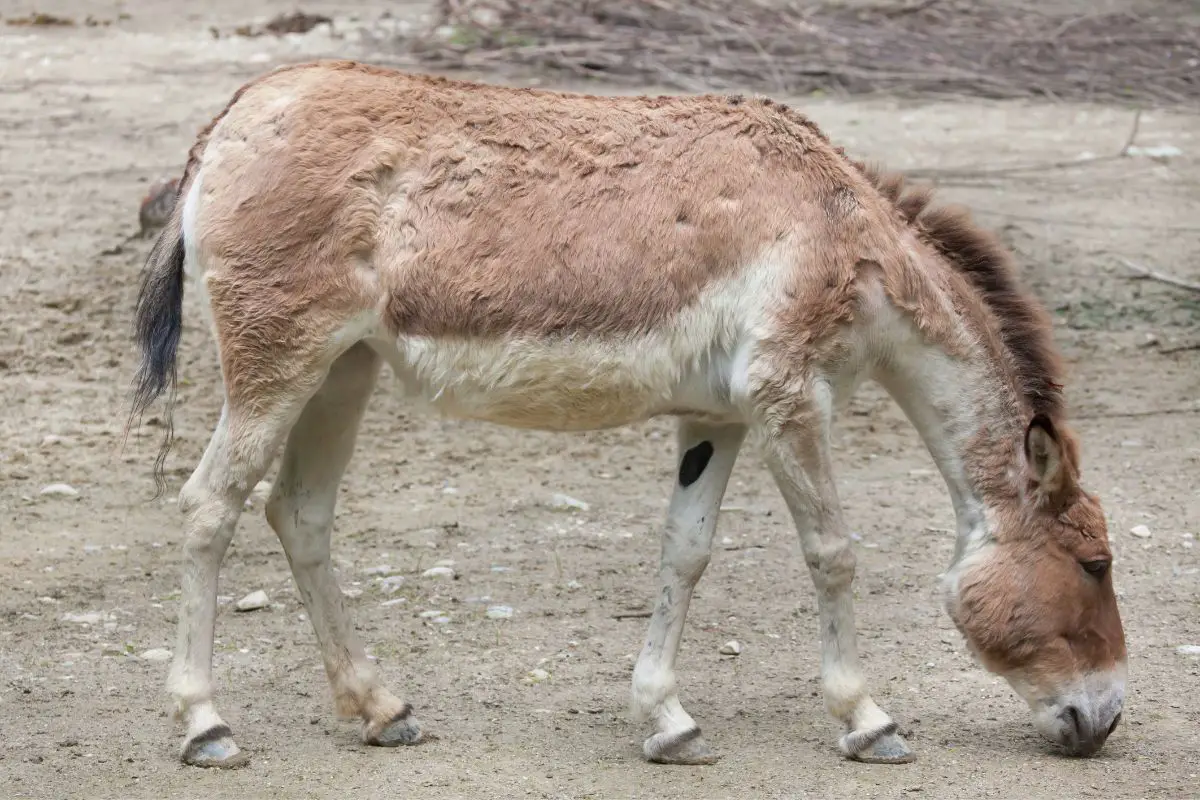
Equus Kiang is also the Asian wild ass and is native to the Tibet plateau. It has unique white patches on the neck, belly, and legs alternating with brown patches on the back, hind, and head. Kiangs live in the cold areas of Pakistan, India, Nepal, and Qinghai province in China.
They inhabit grasslands, shrublands, and temperate to cold climates. In addition, they live in herds and mainly feed on grass, shrubs, and herbs. An average Kiang weighs 550-660 pounds, stands about 3.5-4 feet high, and can live for up to 20 years.
It belongs to the same family as a zebra and lives in the same habitat. In addition, both animals are single-toed and have long legs. Kiangs differ from zebras because they lack stripes.
In addition, they have short ears, unlike zebras with long hairy ears.
13. Wooly Rhinoceros
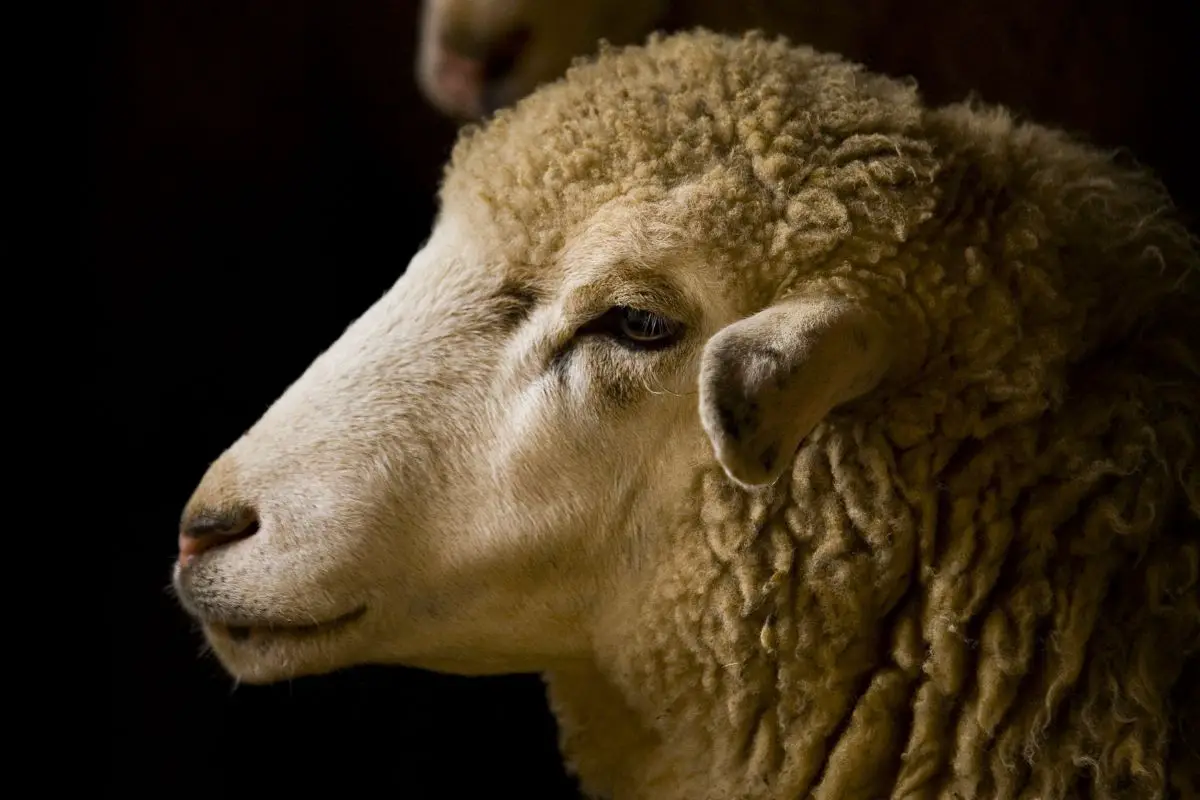
Although its currently extinct, Wooly rhinoceros were once found in North America, Asia, and Europe. They existed 15,000 years ago in mammoth steppes and mainly fed on herbaceous plants. Wooly rhinoceros were covered in fur to survive the extremely cold temperatures.
The fur also served as a camouflage to enable them to blend in snowy environments. The rhinoceros had a huge hump on the shoulder and weighed 8000 pounds. In addition, they stood about eight feet high and had two distinctive horns.
Wooly rhinoceros belong to the perissodactyl family of odd-toed ungulates, and so is a zebra. It’s different from a zebra because of its hairy coat, two horns on the face, and its massive size.
14. Quagga
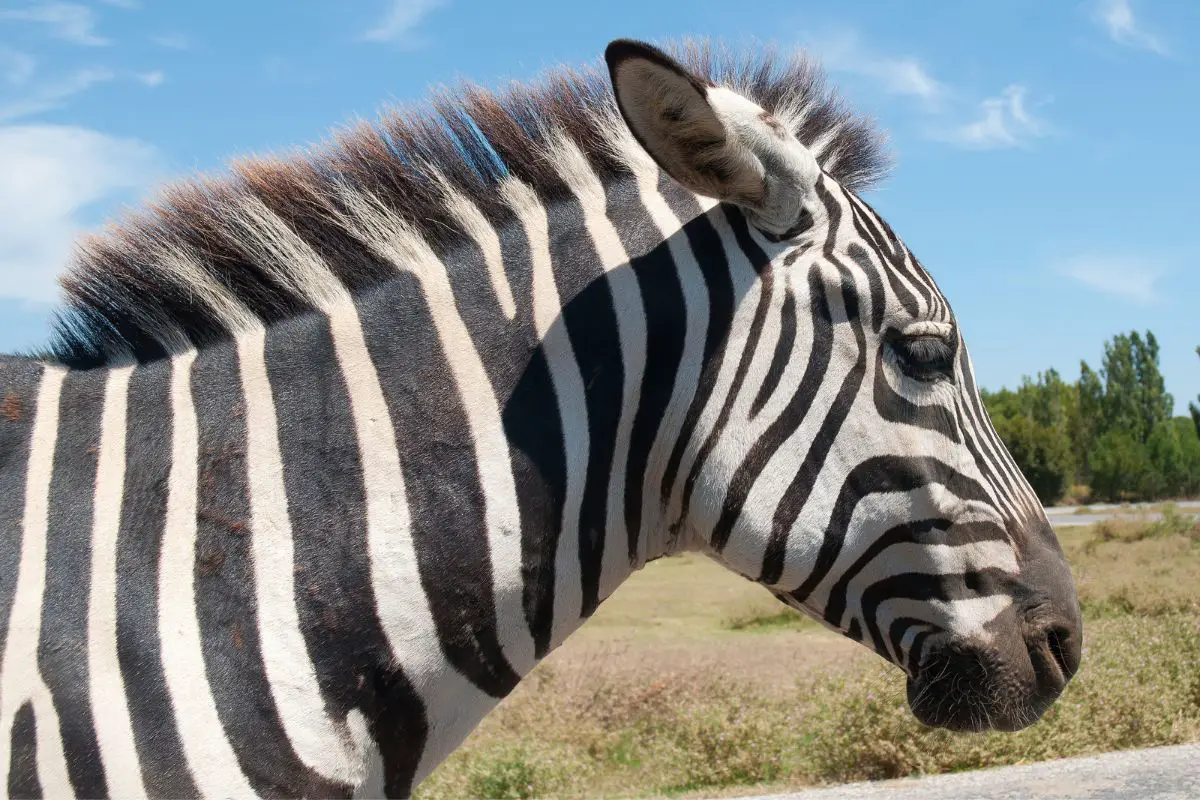
Quagga is a subspecies of the plains zebra that became extinct in the 18th century. It was native to South Africa and lived in the Southern parts of the Orange free state and the Karoo region of the cape province. An average Quagga weighed 500-700 pounds and stood about 5.3 inches tall.
It inhabited wetter pastures and temperate grasslands and survived on grass, shrubs, and leaves. In addition, it resembled the surviving species of zebras but lacked stripes on the back. Archaeologists estimate that a Quaggas’ average lifespan was 20 years.
Although they are subspecies of zebras, they are different because they only have white stripes on their neck. The rest of the body resembles a horse.
15. Miniature Donkeys
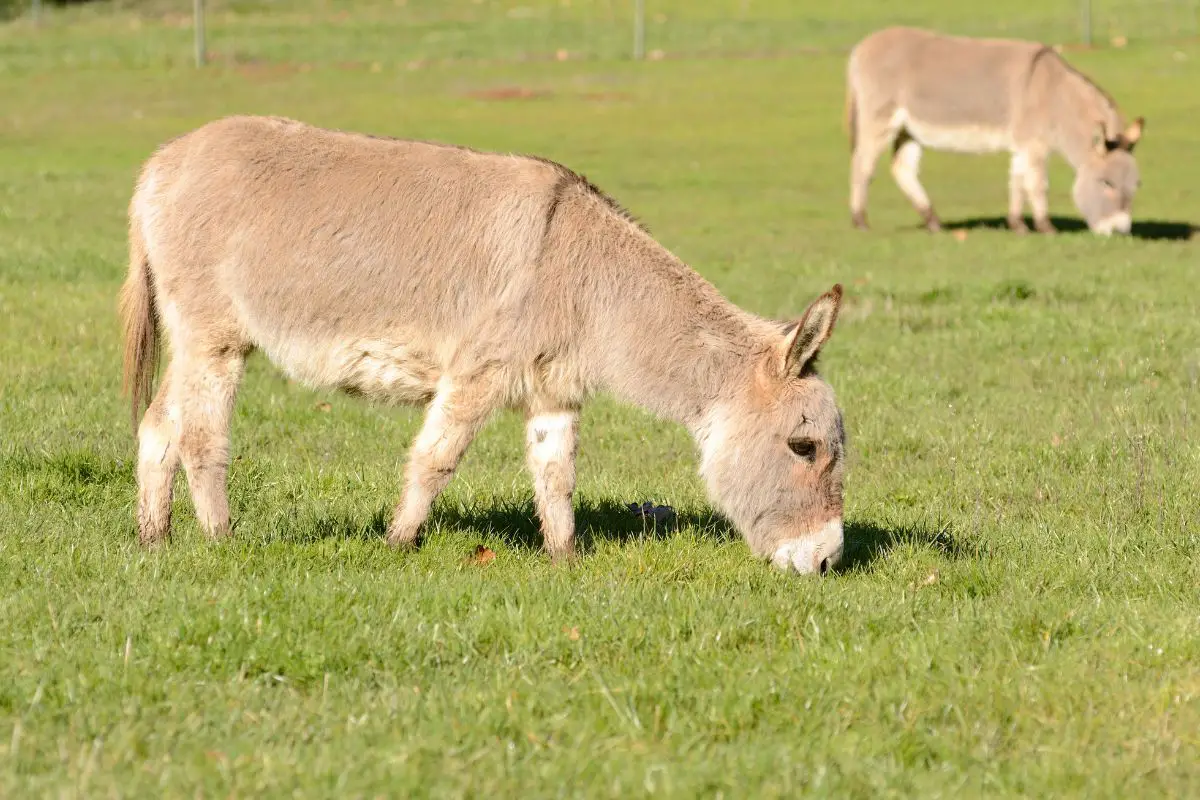
Miniature donkeys are small equines native to the Mediterranean islands of Sicily and Sardinia. They are 36 inches tall and weigh 200-450 pounds. Like regular donkeys, these animals have long ears and tails.
In addition, they have good vision and a strong sense of smell. These small equines feed on grass, shrubs, stems, and leaves. They are easier to tame and make great pets.
Miniature donkeys and zebras belong to the same family. In addition, they are herbivorous and have long ears, short manes, and good eyesight. Miniature donkeys differ from zebras because they are shorter and weigh lesser.
In addition, they are plain colored, whereas zebras have white stripes. Besides, they are slow and easy to domesticate, unlike zebras, which are fast and unpredictable.



